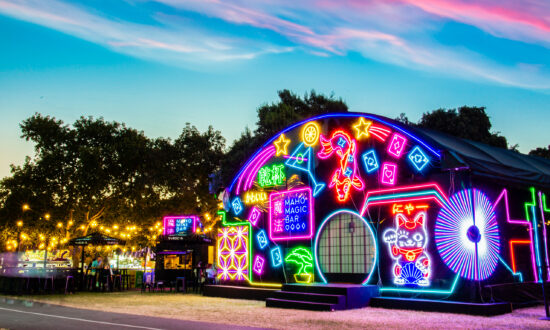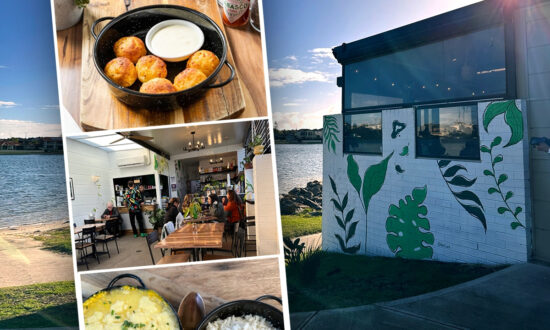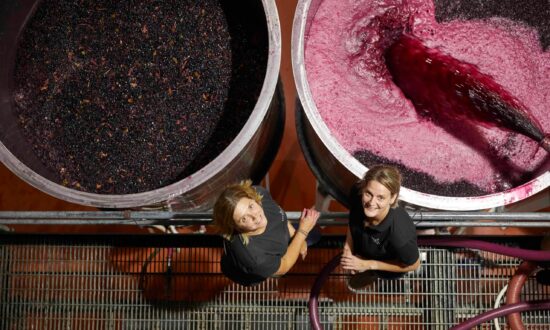Been up in the Hills lately? The fogs through the higher points have been fairly persistent – though not that unusual for inhabitants and regular visitors.
They’re not just a mid-winter thing. Often the mist comes in during the shoulder seasons as well. Low clouds, too, are all part of the weather vibes of what we like to call our high country.
In wine vernacular, this is probably proof for many that the region’s tag of being cool-climate is legit, though in reality that’s more to do with what happens during grape-ripening season, when temperatures are a little lower generally than in less mountainous places, and drop dramatically once the sun goes down.
This allows the fruit to cool down and not over-cook, encouraging long, even flavours and plenty of retained acidity at harvest time which eventually translates to fresher, crisper and crunchier wine characters down the track.
Many grape varieties thrive in such conditions, among them the region’s classics such as Sauvignon Blanc, Chardonnay and Pinot Noir, the latter two as individual table wines and blended as sparklings.
Now there are many more newcomers settling into these same conditions. La Prova winemaker Sam Scott names five of them as the leading players: Gruner Veltliner, Tempranillo, Sangiovese, Nebbiolo and Fiano. There are lots of smaller plantings as well, such as Barbera, Dolcetto and Lagrein. Note – none of these originates in France.
“There’s a lot of demand for those varieties,” Scott says. “People want to drink them, restaurants and bars want to list them, and suddenly there are line-ups of winemakers wanting to make them, from what is currently a finite fruit source.”
All those varieties mentioned make up a tiny percentage of Adelaide Hills plantings – around the 5 per cent mark, but growing gradually every year.
Another intriguing factor with Nebbiolo is its typical lighter, more translucent colour in the glass, which might lead newcomers to the variety to think it’s a bit weak-kneed.
One of the most engaging of these mostly Italian-origin varieties is the red grape Nebbiolo. Its home is in the north-western Piedmont region of Italy, in the foothills of the Alps, where the fogs come in during harvest time and often don’t lift till the end of vintage.
The Italian word for fog is “nebbia”, which of course suggests that’s where the grape variety’s name originates. Its fame comes from wines of the districts of Barolo and Barbaresco, the best of those now revered globally, imported here enthusiastically, and while nowhere near the stratospheric price points of grand cru Burgundy, they can fetch well into the hundreds of dollars per bottle for top current releases.
Winemakers here are clearly keen on the variety, mainly because they love its wine style – the dollars are irrelevant given what they all say is the degree of difficulty in growing it, and often the time needed in maturation before release.
Finding the right spots in the Hills is the key to managing some of those viticultural challenges, Sam Scott says. He sources his from the Macclesfield-based Longview Vineyard which has more than eight hectares planted to eight different clonal variations of Nebbiolo. The first of those were planted in 1995, making it some of the oldest in Australia. (In 2021 Longview supplied fruit to more than 12 producers, including themselves, but in 2022 the supply fell due to very low vineyard yields.)
“Nebbiolo has the earliest bud burst and ripens very late in the season, so the fruit is out on the vine for a long time and vulnerable in a sense to all the vagaries of the vintage’s weather,” Scott notes.
Maximising sunshine and finding warmer sites are important in cooler climes, but UV radiation here is different to Italy, he points out. These are key considerations given a certain challenge presented by Nebbiolo: the ripening of fruit sugars at the same pace as the “ripening” of seeds and stalks, which are the source, along with skins, of its trademark tannin profile.
One of Nebbiolo’s defining characters is its palate texture, marked by its tannin-derived drying sensation in the mouth as we drink.
The variety naturally possesses these in droves, which is one of the reasons why it garners attention in the restaurant trade, and increasingly with engaged wine consumers, many now seeking more than just big fruit explosions and oaky extraction.
Another intriguing factor with Nebbiolo is its typical lighter, more translucent colour in the glass, which might lead newcomers to the variety to think it’s a bit weak-kneed. It can be confusing, because the variety is far from that, possessing a hidden power and complex savoury characters.
These are the elements that have attracted winemaker Stephen Pannell to the variety, which he nurtures at the Protero vineyard in Gumeracha. He’s created wines there for its original owners since the early 2000s, and bought the property in 2019 to further explore the delights of Nebbiolo and other cool-climate white varieties released under the vineyard’s name.
Nebbiolo has made him think about what he likes about all wines, Pannell says.
“It’s not weight, it’s not density, and it’s not colour. It is perfume, it is lightness, it is elegance, and it is tannin.
“We are having more and more conversations these days about red grape varieties and phenolic characteristics (chemical compounds within the grape that affect a wine’s sensory expressions, like colour, density and tannin levels).
“It’s not just about the fruit and the aromatics of the wine variety. Each variety has very specific phenolic characters and specifically their resulting tannins.
“And now more than that – we see that tannins can have a flavour as well – they are not just drying, but we can see terracotta, leather, earth, those kinds of things.”
All this also adds meaning to the wine lexicon’s favourite new descriptor – “savoury”. In the most basic way, it’s anything outside the fruit sweetness box, anything that isn’t essentially berries and plums or peaches and nectarines, lemons or limes and so on. It’s way more complex than that, of course, but there’s a start.
In Nebbiolo territory, one of the ways to manage its natural tannin load is to macerate the harvested fruit with its skins for longer than most other varieties, during and after fermentation. Stephen Pannell sticks mostly to round the 25-day mark, though some parcels have gone as long as 109 days.
One of the pioneers of the variety in the Hills, Peter Godden with his Arrivo brand, also went as long as 72 days with his Arrivo Lunga Macerazione in 2009, which is still currently available, and arguably one of the crowning achievements so far in Australian-made Nebbiolo.
The technique is fraught with danger in terms of winemaking chemistry, but keeping the skins under the surface of the various vessels in use, stainless-steel tanks and larger, older oak barrels, is just the start of best practice in this instance.
The time on skins might seem counter-intuitive – you would imagine this turbo charges the tannin weight in a wine, but in fact, it softens the mouthfeel. Another of the mysteries of the variety.
The time factor seems to be everything with this variety.
“It’s a wine that is going to take time to understand,” Steve Pannell says. “How to make it, how to grow it, the restraint required in the winemaking, seed ripeness, yield and berry size – there are a whole lot of things that are odd with it.”
He has close to 20 years of experience with his vineyard and the variety, and he freely admits he’s still learning. Is it the right place – he’s still not even sure about that, though the wines he’s made from there tell otherwise.
“It’s certainly a journey with the variety,” he says. “It’s going to take time.
“But I hope more people plant Nebbiolo. It has a future.”
TASTING NOTES

Longview Fresco 2021
Adelaide Hills / 13.5% / $34
A lighter, bistro style that brings together Italianate varieties – Nebbiolo, Pinot Nero, Barnera and Dolcetto – grown on the Saturno brothers’ vineyard at Macclesfield. Delightfully fresh, as the name suggests, tangy red fruits, a feel of Ribena in the flavour profile, and acidity reminiscent of raspberry. Lively acidity drives the palate more than tannins, this spritely little number is a terrific snacking drink. Also in the Longview Nebbiolo portfolio is a Rosato and a more serious style called Saturnus.
Pike & Joyce Nebbiolo “Innesti” 2020
Adelaide Hills / 14.5% / $40
Grown at the P&J Lenswood vineyard. The first thing here is to notice the colour, on the lighter side as is typical of the variety, but after that, there is hidden power within. The nose shows some ferrous notes along with darker dried flowers like lavender and violet, the palate sits in a blue to crimson fruit spectrum while the mouthfeel and structure have clear varietal intentions in their tannin drive. Great with a braised lamb.
Alpha Box & Dice “Fog” Nebbiolo 2021
Adelaide Hills / 13.8% / $50
Sourced from the Christmas Hill Vineyard in the Kuitpo district. Typical garnet colour at first sight, some brick dust in the nasals, and picking up a fair bit of momentum as you taste, led by crimson berries if you are looking for its fruit characteristics. The palate structure and feel is rustic – not uncommon for the variety – with tannins not overly demanding, aiding the finish to remain fresh and lively.
Elderslie Nebbiolo 2020
Adelaide Hills / 14.5% / $56
Pure Nebbiolo bliss to start – almost pinot-like in its bouquet, fragrant with rose and potpourri. The palate aromatics echo these again with subtle hints of dark choc-coated dried orange in the background. Totally in the varietal zone. While all this is most attractive, the power held within is the more serious theme to this wine’s story with well-geared tannins and acidity integrating into a medium to fuller-bodied style that retains its finesse with welcoming manners.
La Prova Uno Nebbiolo “Colpevole” 2018
Adelaide Hills / 14.1% / $45
One of winemaker Sam Scott’s much loved Italian family of Italian varieties, this is sourced from the Longview Macclesfield vineyard. There’s plenty of focus here, two months of skins maceration just part of it. It’s fragrant, tarry, earthy with a great mix of cherry fruit and savoury elements, held together by its varietal tannins that are chewy but never blocky, willful but never heavy-handed, just as they should be. A lovely wine that celebrates all things Nebbiolo. La Prova also has a Rosato from the variety, the new 2022 vintage to be released soon.
Coates The Nebbiolo 2019
Adelaide Hills / 14% / $50
Pure fragrant and floral Nebbiolo with notes of red brick dust and a touch of oak to start – all adding to a very attractive aromatic environment. There’s a purity also that follows, a clarity in the red cherry flavour profile with a fulfilling gastronomic mouthfeel that sits right in medium-weight territory, encouraging tannins even-handed from start to finish. Balance is the key here, with an assured elegance. And delicious to boot.
Arrivo Nebbiolo Lunga Macerazione 2009
Adelaide Hills / 14.5% / $84
As the title suggests, this was a long-term macerated style, one of two 2009s Nebbiolo expert Peter Godden crafted in that vintage from his, then, Gumeracha block. From an Aussie point of view, this variation is as close to a masterful Barolo as you could imagine. Bravo. The nose is extraordinary, a glorious fragrance, liqueur cherry in the fruit spectrum, dark cherry skins, dark spice and dried flowers. In the mouth the wine becomes mostly savoury, and its tannins have lightened via the long grape skin maceration and maturation time in bottle, now ever so faintly edging towards gastronomic bitters, suggestive of a light amaro. Brilliant. (The other 2009 is also a treat with rose and potpourri top notes, still fresh after 13 years.)

Get InReview in your inbox – free each Saturday. Local arts and culture – covered.
Thanks for signing up to the InReview newsletter.
Protero Capo Nebbiolo 2018
Adelaide Hills / 14.5% / $80
Let this Steve Pannell crafted delight, from his adored Gumeracha vineyard, sit in a decanter for a few hours, or as long as you can wait. It will also develop assuredly in the glass as you take time to take it all in. The fragrance is ethereal, those dried flowers again with classic cherry notes as a background flavour wall. In the mouth, all the focus is on the palate tannins, which remarkably have flavour in their own right and become a totally engaging sensory perception. Delightfully medium-bodied, immensely drinkable with great presence and length.
Support local arts journalism
Your support will help us continue the important work of InReview in publishing free professional journalism that celebrates, interrogates and amplifies arts and culture in South Australia.
Donate Here




